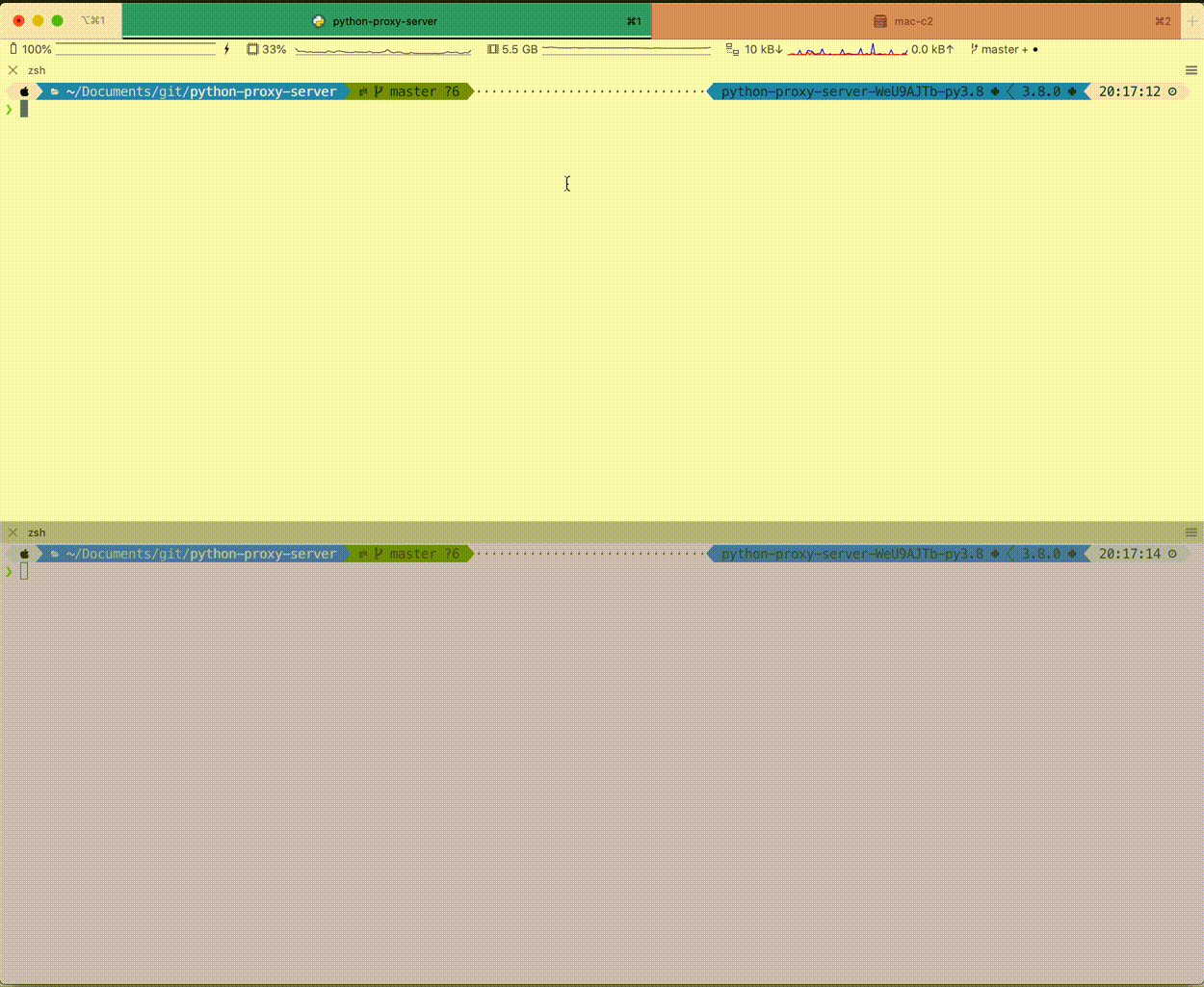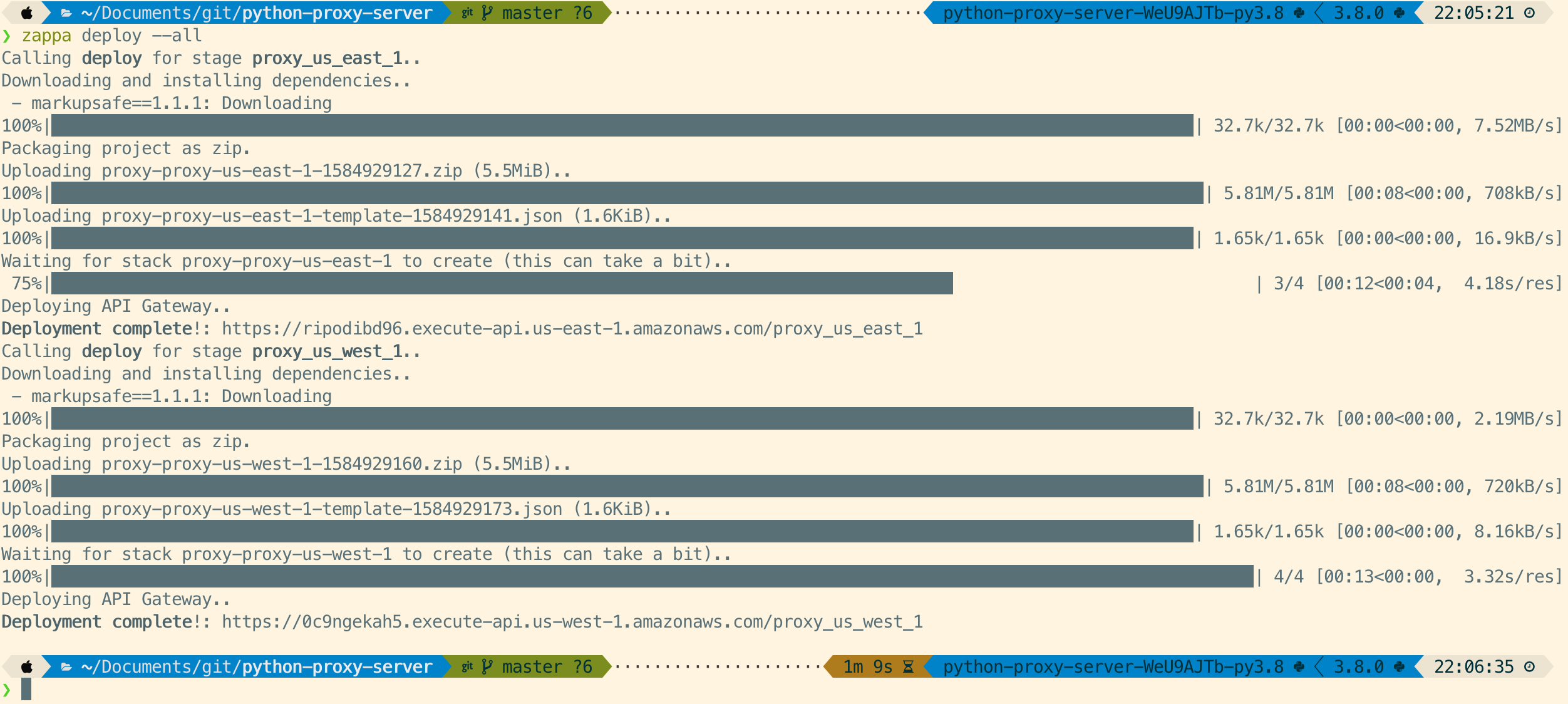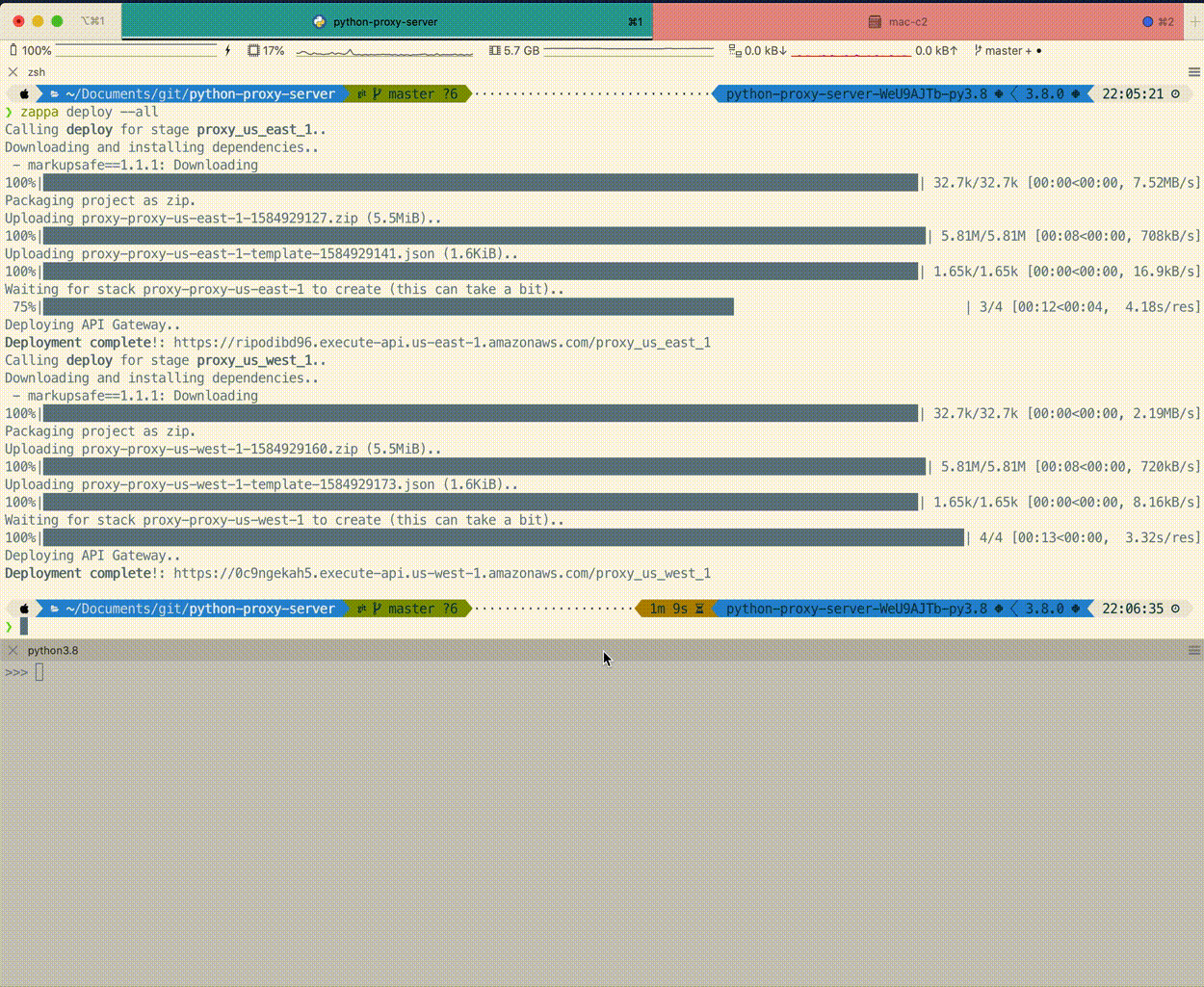A free, Python proxy server on AWS Lambda
Amazon Web Services’ (AWS) serverless offering, AWS Lambda, is part of their “always free tier”. What that means is you get 1 million requests per month, or 3.2 million seconds of compute time per month, for free. Forever.
You can deploy a simple Flask app on Lambda, which will make your web requests for you from within AWS’ network, rather than your local, or web scraping machine’s IP address. This can help you get around firewalls*, or websites that will block your IP address after repeated requests. The deployment is seamlessly handled by Zappa, a framework for managing serverless Python applications.

*At the time of this writing, you can deploy your proxy servers in 16 different countries on AWS (source).
How does it work?
We start with a simple Flask application, proxy.py, which takes in a POST request containing a URL. The app will make a GET request to that URL, and return the pickled response object.
import io
import pickle
from flask import Flask, request, send_file
import requests
app = Flask(__name__)
@app.route("/", methods=["GET", "POST"])
def index():
data = request.form
r = requests.get(data["url"])
pickled_response = pickle.dumps(r)
return send_file(io.BytesIO(pickled_response), mimetype="application/octet-stream")
if __name__ == "__main__":
app.run(debug=True)
Instead of your process making requests directly to a URL, it now does so through the proxy server URL.
import pickle
import requests
proxy_response = requests.post(
'<proxy_server_url', # Your proxy server URL
data={'url': 'https://ianwhitestone.work'} # URL you want to request
)
if not proxy_response.ok:
raise Exception(
"Proxy request not successful. Status code: "
f"{proxy_response.status_code}\n{proxy_response.text}"
)
response = pickle.loads(proxy_response.content)
You can now interact with the requests response object as you would normally:
>>> response
<Response [200]>
>>> response.text
'<!DOCTYPE html>\n<html>\n <head>\n <title>Ian Whitestone</title>\n\n ...
...
Here’s a demo of running the proxy server locally, with python proxy.py:

Now of course, we don’t want to run this thing locally. That defeats the whole purpose of a proxy. To get this app running on the cloud, we leverage the Python serverless framework, Zappa. Zappa takes a config file, zappa_settings.json, and automatically creates Lambda functions which serve your Flask application.
Here, I tell Zappa to create two Lambda functions, one in the us-east-1 region and another in the us-west-1 region.
{
"proxy_us_east_1": {
"app_function": "proxy.app",
"aws_region": "us-east-1",
"project_name": "proxy",
"runtime": "python3.8"
},
"proxy_us_west_1": {
"app_function": "proxy.app",
"aws_region": "us-west-1",
"project_name": "proxy",
"runtime": "python3.8"
}
}
The deployment is a simple Zappa cli call, zappa deploy --all. As you can see, it takes just over a minute to deploy two Lambda functions and all the associated AWS configurations (API gateway, IAM roles, etc..)

Now, we can grab the URL for the proxy we want to use and make a post request against it:

If you’re interested in trying this out, head over to this repo for full setup instructions.